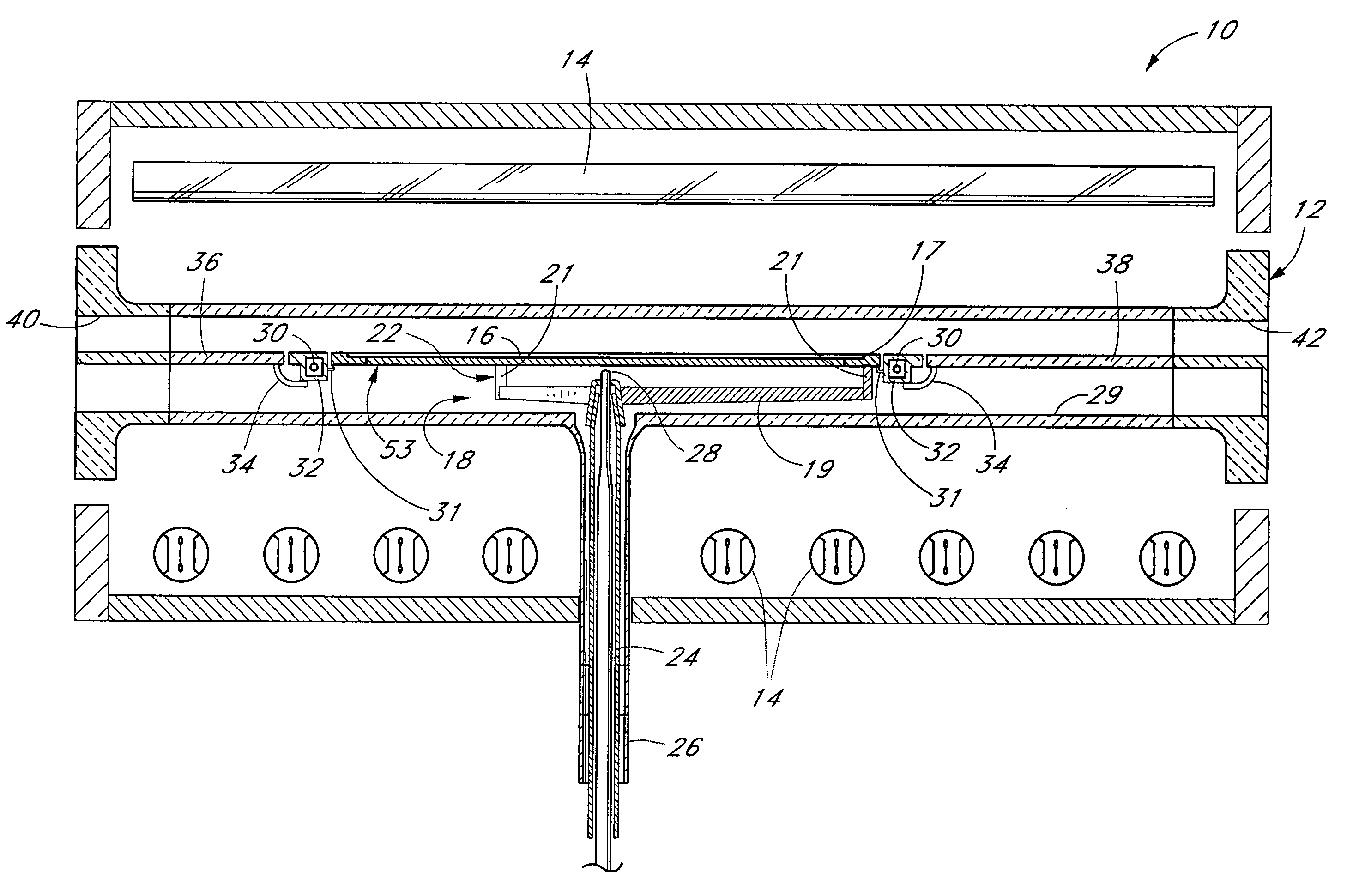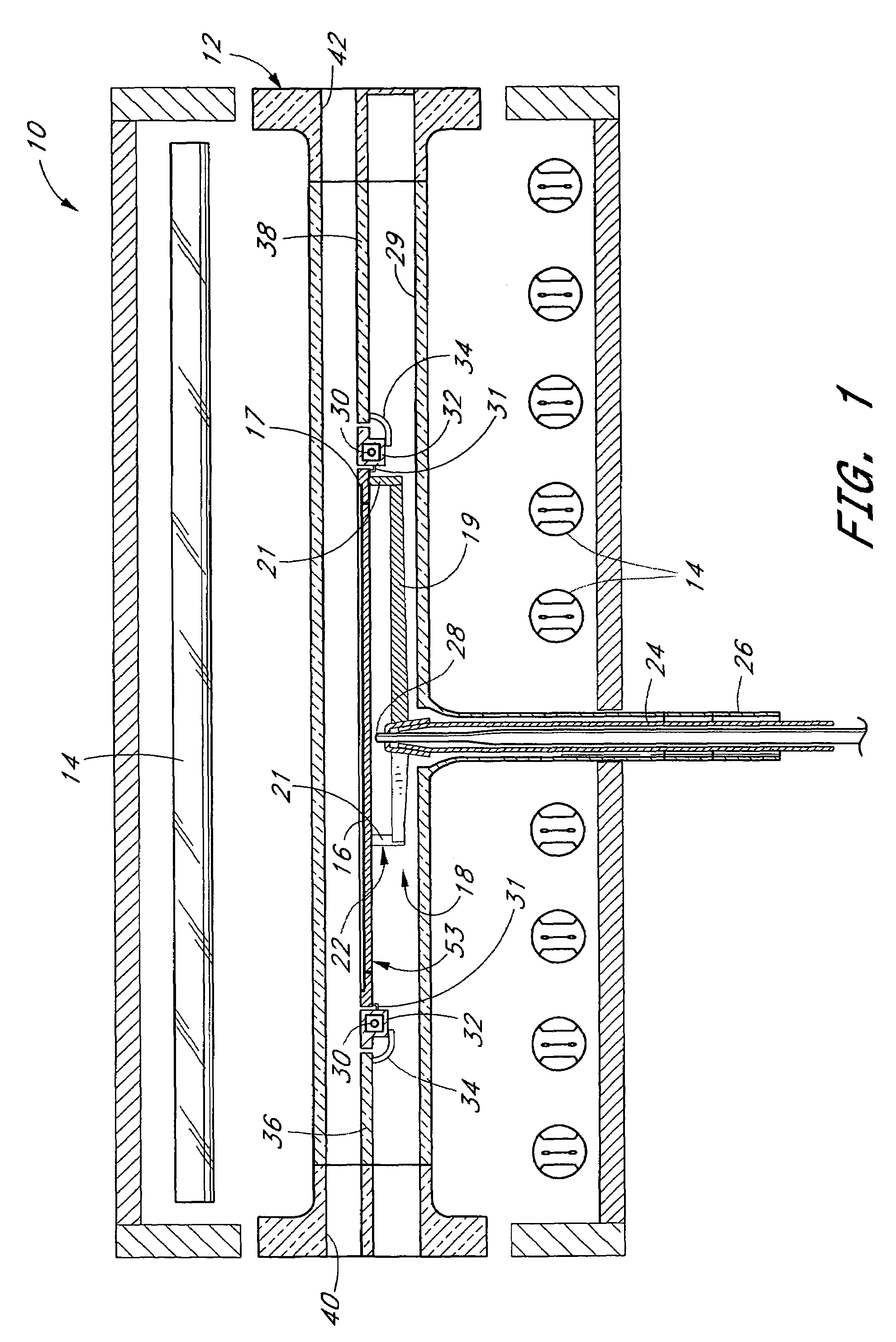Wafer holder with peripheral lift ring
a technology of lift ring and wafer, which is applied in the direction of coating, metallic material coating process, chemical vapor deposition coating, etc., can solve the problems of increasing the probability of crystallographic slippage, destroying any device through which it may pass, and slipping in the wafer, so as to reduce the effect of thermal shock, and reduce the risk of thermal shock
- Summary
- Abstract
- Description
- Claims
- Application Information
AI Technical Summary
Benefits of technology
Problems solved by technology
Method used
Image
Examples
Embodiment Construction
[0048]Contained herein are descriptions of several different embodiments of wafer holders having features in accordance with the teachings of the present invention. It will be understood that these wafer holders can be placed within “hot wall” reactors or “cold wall” reactors. In the latter case, these wafer holders can be susceptors that absorb radiant energy from the heating elements. Various susceptors according to the invention are illustrated and described herein, including susceptor 50 (shown in FIGS. 2-4), susceptor 57 (FIG. 5), susceptor 51 (FIG. 6), and susceptor 53 (FIG. 7), each of which are described in further detail below. Any of these and other susceptors according to the invention can be used within a reactor. FIG. 1 illustrates an exemplary reactor containing the susceptor 53 of FIG. 7. The skilled artisan will understand that any of the herein illustrated susceptors can be provided within the reactor illustrated in FIG. 1.
[0049]As explained above, FIG. 1 illustrate...
PUM
| Property | Measurement | Unit |
|---|---|---|
| temperatures | aaaaa | aaaaa |
| angles | aaaaa | aaaaa |
| temperature | aaaaa | aaaaa |
Abstract
Description
Claims
Application Information
 Login to View More
Login to View More - R&D
- Intellectual Property
- Life Sciences
- Materials
- Tech Scout
- Unparalleled Data Quality
- Higher Quality Content
- 60% Fewer Hallucinations
Browse by: Latest US Patents, China's latest patents, Technical Efficacy Thesaurus, Application Domain, Technology Topic, Popular Technical Reports.
© 2025 PatSnap. All rights reserved.Legal|Privacy policy|Modern Slavery Act Transparency Statement|Sitemap|About US| Contact US: help@patsnap.com



